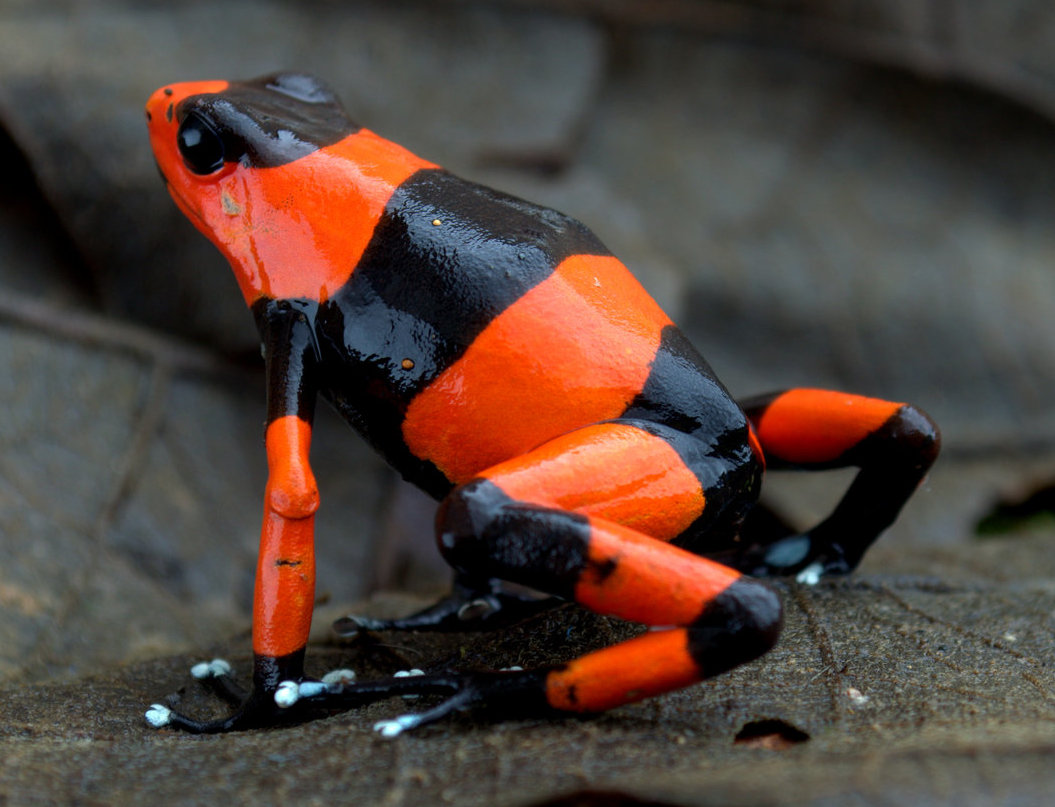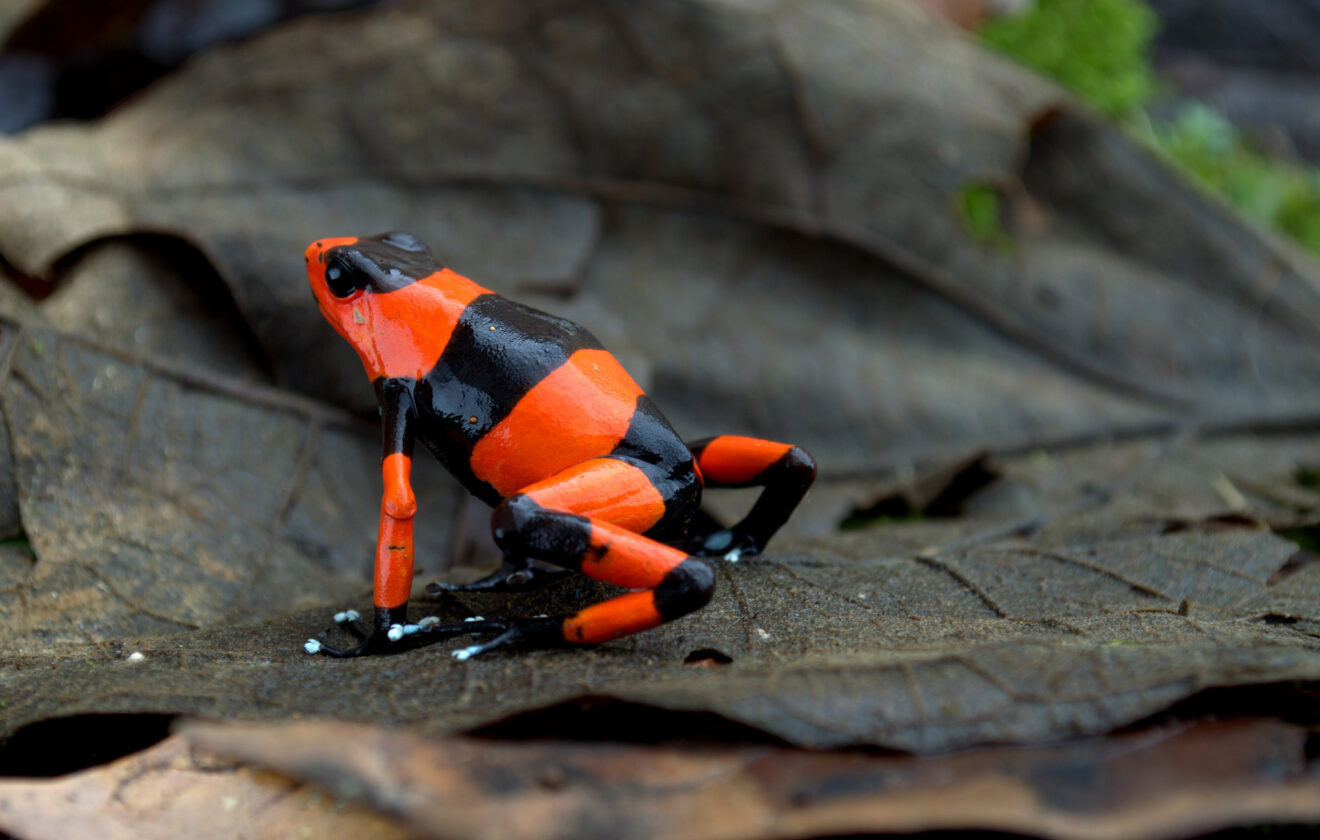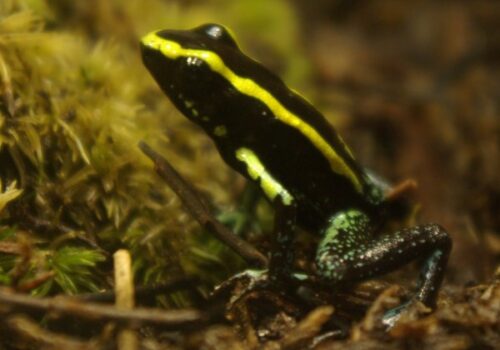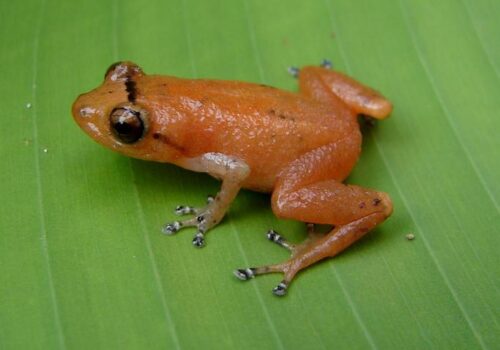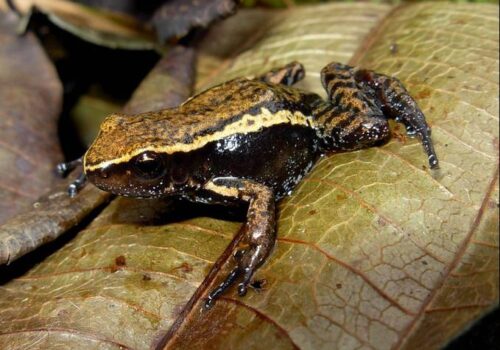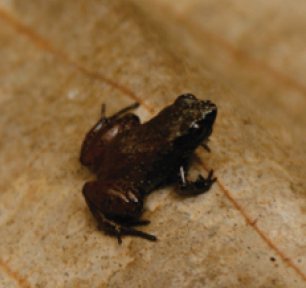The Jewels of Colombia: Discovering the Intricate Beauty and Ecological Wonders of Oophaga lehmanni#
Deep within the lush tropical forests of Colombia, a tiny living jewel leaps quietly amidst leaf litter and emerald undergrowth—vibrant yet elusive; beautiful but powerfully toxic. This captivating creature is Oophaga lehmanni, commonly known as Lehmann’s poison frog or Lehmann’s dart frog. Despite its diminutive size, this enchanting frog commands remarkable importance, not only because of its breathtaking appearance and intriguing behaviors but also due to its alarmingly threatened existence.
Named in honor of Colombian biologist Federico Carlos Lehmann Valencia, this species attracts attention not just from scientists and conservationists, but also from anyone fortunate enough to glimpse it in its natural habitat. However, beneath its bright façade lies a warning—this creature possesses powerful toxins potent enough to fend off some of the rainforest’s most persistent predators.
Taxonomy and Classification#
Oophaga lehmanni belongs to the family Dendrobatidae, commonly known as poison dart frogs. The name “Oophaga” translates roughly to “egg eater,” derived from their unique parental behavior: females lay unfertilized eggs specifically to feed developing tadpoles.
Initially classified in the genus Dendrobates, taxonomic research later placed this species into the genus Oophaga due to distinct parental care patterns and unique biological traits. Some of its closest relatives include the widely studied golden poison frog (Phyllobates terribilis) and the captivating strawberry poison frog (Oophaga pumilio), both of which share fascinating behavioral and biological characteristics.
Natural Habitat#
The rugged, rain-soaked mountains of western Colombia form the exclusive home of Lehmann’s poison frog. Their known habitats are limited mostly to the humid rainforests within the departments of Valle del Cauca and Chocó, regions renowned for their extraordinary biodiversity.
An Environment Shaped by Clouds and Rain#
This vivid creature primarily dwells beneath dense forest canopy, thriving amidst a constant moisture-laden atmosphere created by frequent rainfall and misty clouds. The rich, damp leaf litter covering the forest floor provides essential refuge, creating a habitat brimming with ample hiding spots, feeding opportunities, and suitable breeding grounds. Fallen logs, lush moss carpets, and broad-leaved plants offer perfect microhabitats favoring the frog’s secretive nature.
This species’ specialized habitat requirements—high humidity, stable temperature, and low human disturbance—render it highly vulnerable to environmental change. Even slight disruptions to the delicate forest balance pose significant risks, making the preservation and careful management of their habitats critical to their survival.
Physical Characteristics#
A first encounter with Oophaga lehmanni never fails to elicit awe. Adults measure barely more than 3 centimeters in length, yet their striking coloration renders them unforgettable. They exhibit remarkable polymorphism—color variations within the species range from bold blacks and vivid reds to dazzling oranges and glistening yellows, often arranged in striking banded patterns across their bodies and limbs.
Beyond mere aesthetic appeal, these striking patterns serve as an aposematic (warning) signal to potential predators. Their radiant colors effectively proclaim their toxicity, biologically derived from alkaloids present in the insects upon which they feed. Unlike their appearence, their skin texture is deceptively smooth and moist, enhancing cutaneous respiration and moisture retention.
Toxin as Defense and Adaptation#
Much like other dart frogs, Oophaga lehmanni has evolved powerful alkaloid toxins within its skin. These toxins, obtained from dietary insects, serve as natural chemical armor. Local predators quickly learn to associate their bright coloration with an unpleasant experience, effectively reducing likelihood of predation.
Interestingly, captive frogs fed a toxin-free diet lose their toxicity, reaffirming that their brightly colored defense mechanism is entirely dietary-driven. This distinct adaptation enhances their chances of survival in a harsh evolutionary arms race.
Behavior and Life Cycle#
While small, Lehmann’s poison frogs live lives full of complexity, carefully choreographed in the leaf litter. Diurnal by nature, these frogs actively forage during daylight, consuming a diet predominantly consisting of ants and alkaloid-rich insects. Their careful, calculated hopping movements keep them camouflaged within the leaf-strewn forest floor, despite their unmistakable colors.
Fascinating Parental Care#
Perhaps the most captivating aspect of this species is its exceptional parental devotion. Rather than spawning large numbers of eggs indiscriminately, females lay only a few eggs, meticulously selecting safe, moist locations such as folded leaves or tree hollows.
Remarkably, after hatching, adults provide continued intensive care to their offspring. The male frog usually guards and moistens the eggs, whereas the female engages in a particularly unique practice unique to the genus Oophaga: she feeds the developing tadpoles unfertilized eggs laid specifically for nourishment. A meticulously timed act that ensures the young frogs consume a nutritious, alkaloid-rich ‘dietary supplement,’ helping them develop toxins early in life.
Ecological Role#
Oophaga lehmanni plays an essential ecological role within its rainforest habitat. Like many amphibians, it serves as a crucial indicator species—its presence or unfortunate absence can act as a barometer reflecting local habitat health. Their breeding success or failure may highlight otherwise subtle environmental fluctuations or declining forest integrity.
Additionally, these petite predators keep populations of certain insects in check. Meanwhile unassuming prey themselves, they form a key component of the food web, shaping predator behaviors and influencing species distribution within their delicate ecosystems.
Threats and Conservation Status#
Sadly, the mesmerizing Lehmann’s poison frog faces grave threats today. Classified as Critically Endangered on the IUCN Red List, populations have severely declined due principally to habitat loss driven by deforestation, illegal logging, agricultural expansion, and human development encroachment. Coupled with these habitat losses, illegal wildlife trade—driven by demand from exotic pet markets—has significantly impacted their wild populations.
Their restricted geographic range exacerbates these threats, with localized disturbances capable of drastically impacting entire populations. Additional climate instability and outbreaks of chytrid fungus present further menacing variables, compounding an already precarious situation.
Conservation Initiatives#
Fortunately, initiatives have commenced to reverse the potentially tragic future for Oophaga lehmanni. Colombian governmental bodies, conservation NGOs, local communities, and international entities collaborate on environmental education, habitat restoration initiatives, and law enforcement against illegal poaching and trade.
Captive breeding programs have emerged as integral tools in safeguarding genetic diversity and reintroducing captive-bred frogs back into protected wild habitats. Yet, continued sustainable action and international support remain critical for the long-term survival and recovery of this captivating amphibian.
Cultural and Scientific Significance#
Culturally, poison dart frogs have historically held significant roles for indigenous peoples of Colombia and other South American cultures. Although popularly known from accounts of their toxins extracted for hunting applications (darts and arrows), it’s less documented in Oophaga lehmanni, as it’s their iconic cousin Phyllobates terribilis whose toxins have principally served traditional indigenous hunters.
On a scientific note, the unique alkaloid toxins found in poison frogs broaden our biochemical understanding, potentially leading to new medicinal compounds invaluable to human health. Further study of this species’ reproductive biology and dietary adaptations continues to enrich scientific knowledge, benefitting both amphibian conservation and broader ecological research.
Conclusion#
More than simply an aesthetically delightful rainforest gem, Lehmann’s poison frog symbolically and physically represents an urgent call for conservation and ecological stewardship. Preservation of Oophaga lehmanni—and all amphibians—is vital, enriching the ecosystems and highlighting biodiversity’s magnificent complexity. We invite you to learn more, take action, support conservation groups, and champion the ongoing efforts working tirelessly to ensure these amazing creatures continue leaping freely through Colombian forests for generations to come.
